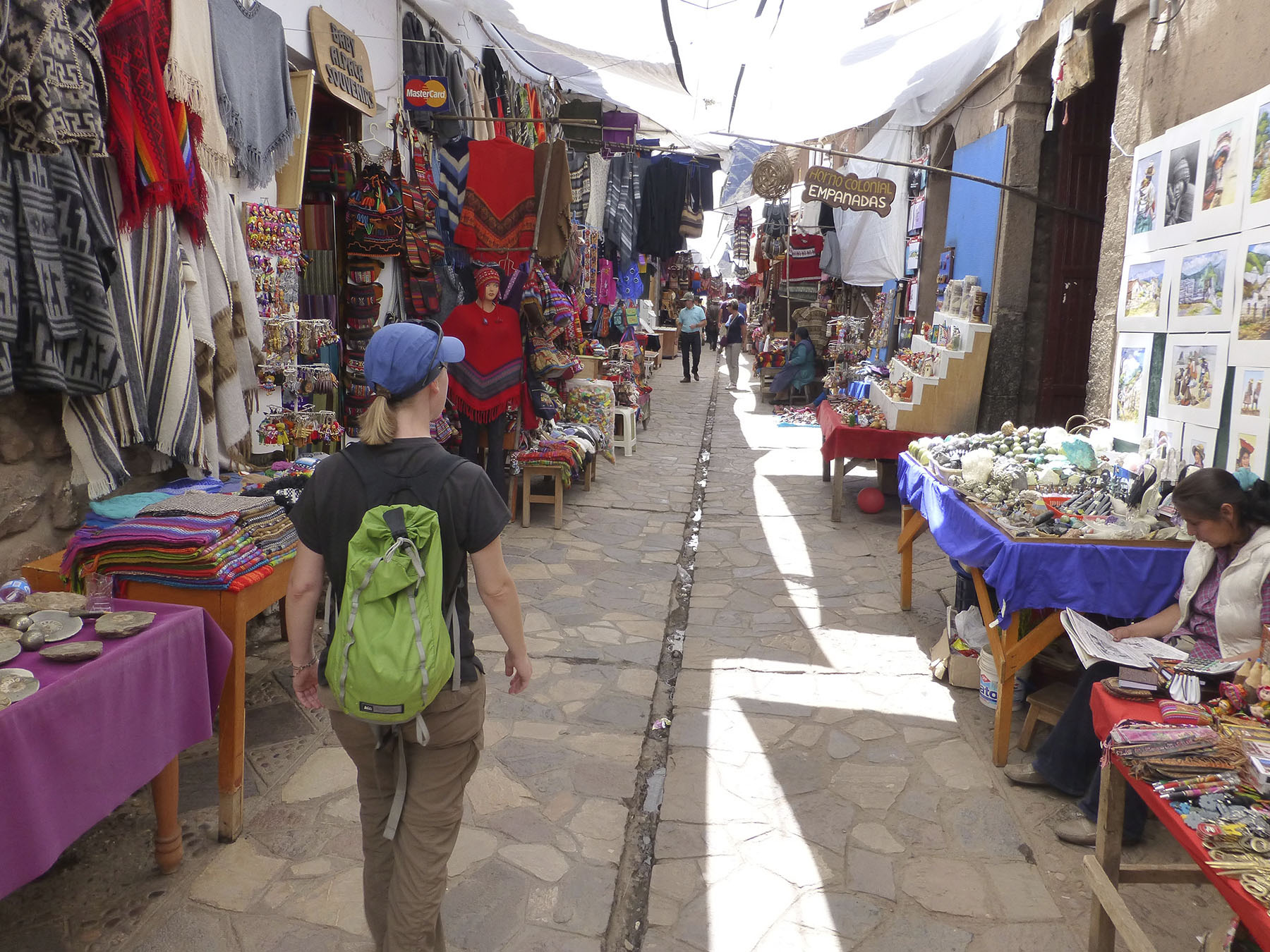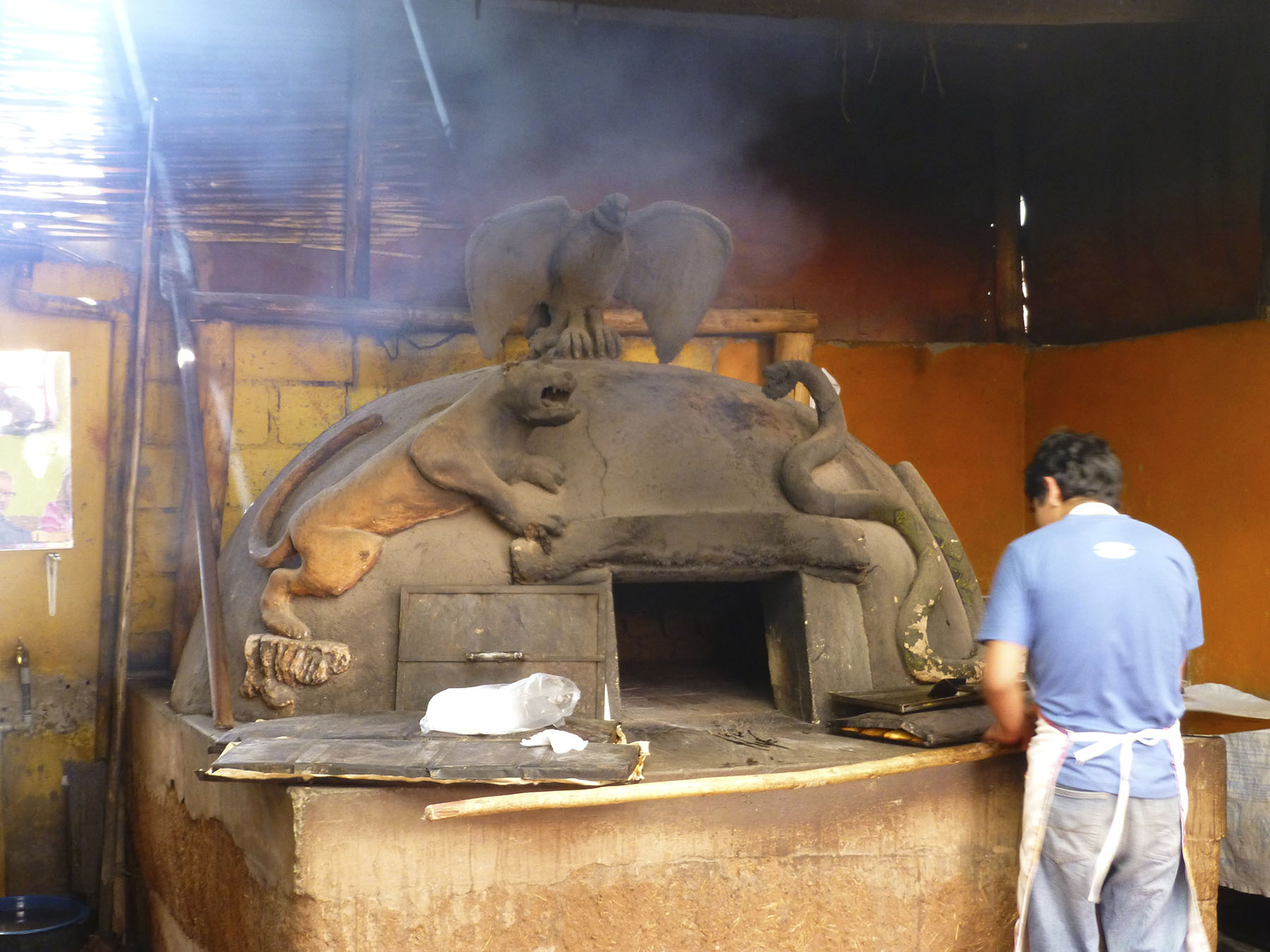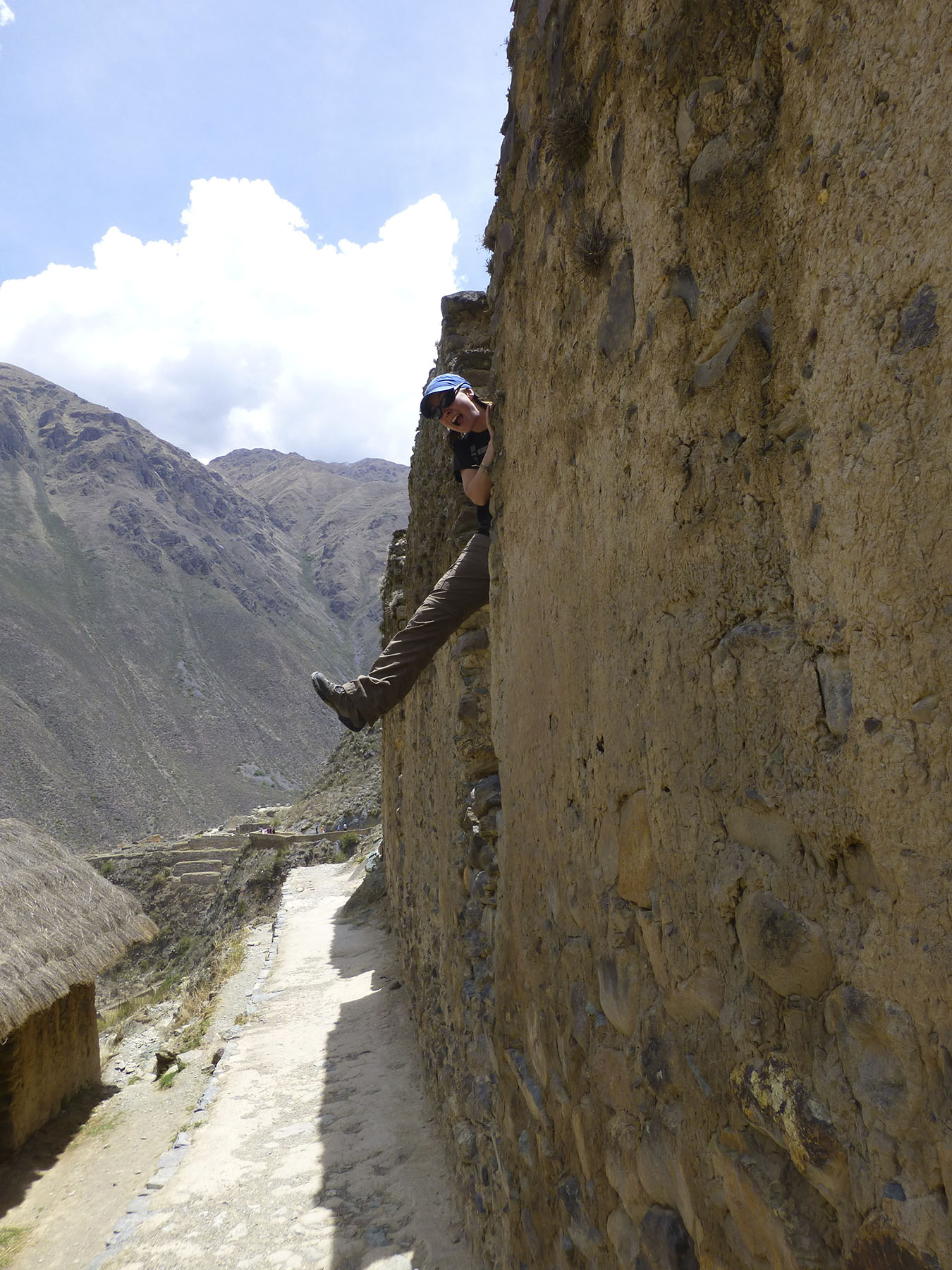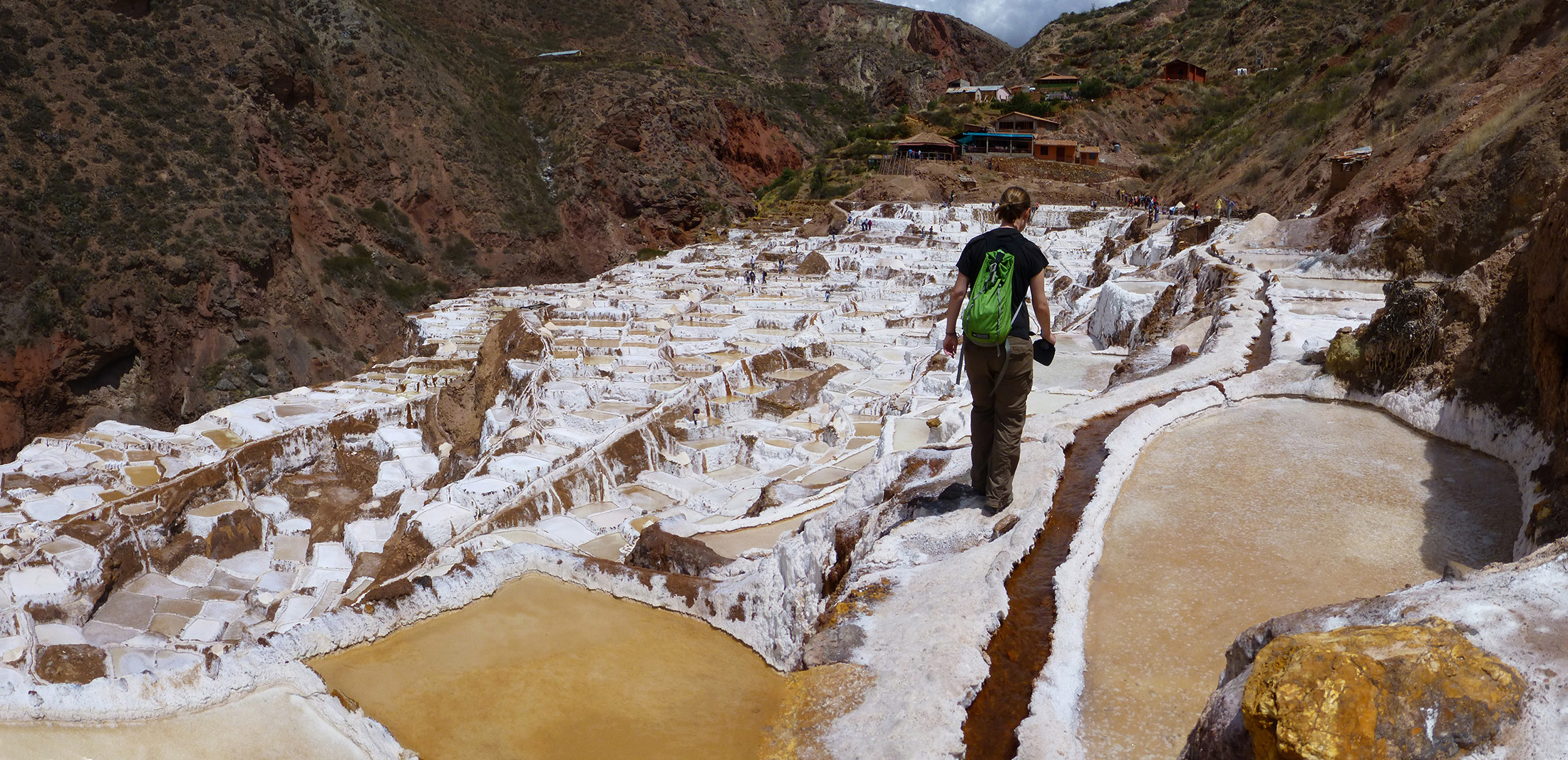Oct 16 - 20, 2013 - Urubamba, Peru
Recovery from the Salkantay trek was slow. Progress was stunted by an unfortunate incident where, on a rare excursion outside just two days after returning to Cusco, I tripped on the sidewalk and fell full force onto my knees. Yes, my aching, creaking knees hammered on stone like two bent nails. The pain was excruciating and I found myself on the ground screaming “Why, God? Why??!!” OK, that last part didn’t happen, but it could’ve happened if I didn’t have self respect. This little mishap forced me to hit the reboot button on the healing process. But you know what they say, the trip must go on…
The next day we boarded a bus to Urubamba, a village nestled in the heart of the Sacred Valley of the Incas. Sacred Valley stretches from Pisac to Ollantaytambo and rests just outside of Cusco city. This area was important to the survival of the Incas as it supplied fertile soil, natural resources, and protection against their enemies. Numerous ruins are scattered from one end of the valley to the other, making this an ideal place to take in the history and impressive skill of the Inca civilization.
In Cusco, the only thing separating public transportation from hitchhiking is a few bucks. The “collectivo” we crawled into was packed full of locals. It was a 15-seater van and quite cozy in there, with barely a breath between you and your neighbor. The sun was ablaze outside making the van interior hot and stifling. Luckily, I was near an open window, otherwise I would’ve melted to the seat. Strangely enough, the man next to me was wearing a long-sleeve knit shirt and jacket. He slept through the entire ride and seemed oblivious to the heat. From what I’ve witnessed, this isn’t atypical for Peruvians. Regardless of weather, men are often in sweaters and jackets, and the women are wearing leggings, thick skirts, cardigans and hats. On days when I’m fanning myself in a t-shirt and shorts, they’re climbing hills with baskets on their backs barely breaking a sweat. Maybe I should try chewing on some coca leaves?
Music pumped through distorted speakers as we bounced our way through the valley. I’ve learned that wherever you go in Peru music follows. The sound of traditional Peruvian music has taken me by surprise. It’s a mix between mariachi and Bollywood. The female vocalizations have a nasally trill that I associate with Indian pop and never anticipated in South America. I can’t say I loved it, but I will say it’s interesting.
Our accommodation was just outside of Urubamba at a little lodge called La Capilla. The tranquil guesthouse was just what the doctor ordered: a private room with a blooming garden outside our door. The owner of the lodge was a Frenchman named Chris. His wife was half Peruvian and half English and their daughter, Beatrice, was a vibrant mixture of all three cultures. She spoke as well as any 3-year-old, except in four different languages – English, Spanish, French, and Quechua. Without any other children around she settled for the next best thing: me. I taught her how to play with pictures on her iPad and we made castles out of pillows. I’m sure her parents are cursing me now since destroying the castle and scattering pillows all over the lounge was her favorite part of the game.
Chris was a high-strung guy who once managed not one, but two restaurants in London simultaneously. That’s some serious energy. Now he’s overseeing this new B&B and, despite having a never-ending to-do list, he was practically clawing at the walls. We chatted with him a lot during our stay. He had many interesting stories to tell and fascinating insight into life as an expat in Peru. Being a veteran of the restaurant business, Chris was an excellent cook and made the most flavorful soups these lips have ever tasted. Corn, cauliflower, broccoli, mushroom – I was in soup heaven! And his quinoa risotto and spaghetti bolognaise was to die for.
Chris and his charming family were excellent hosts and extremely helpful when it came to our tour of Sacred Valley. Our Spanish skills start at “where?” and end at “toilet?” Without their advice and translations we may never have made it to any ruins at all! They arranged a moto-taxi to take us into the town where we then boarded a bus headed to our first destination: Pisac. At first I wondered “Why don’t we just take the moto-taxi all the way to Pisac? They’re nice and cheap and – oh, wait...” That thought died in my brain due to massive vibration trauma. Moto-taxis are basically rickshaws on wind-up toys. They vibrate so much your feet go numb. Our driver spoke zero English but that didn’t stop us from understanding that he was an absolute sweetheart. He made sure we found the correct bus, paid the proper fee, and saw us board safely before saying goodbye.
Pisac was all the way on the other side of the river basin, and the journey there was as lovely as the town itself. The red and green mountainsides rose high above us, glowing bright in the warm sun. Stout women with toddlers strapped tightly against their backs would wave down the bus and climb aboard. Drivers stop wherever you want along the road and pick up anyone who can raise a hand. It’s a very casual system that works well in a country where time is never of the essence.
Once we reached our destination we arranged a taxi ride up to the Pisac ruins. The driver dropped us off and said he’d wait two hours for our return. We set off with plenty of time to hike up and around the historical Inca village. Once again, the agricultural terraces scooped into the mountainside, creating a bowl of plentiful farmland. Stone buildings adorned the crest above. Across the ridge of the mountain ruins continued onward, overlooking the serene township below. We ducked our heads in and out of crumbling structures, walked around perilous ledges, and crept low through barren tunnels. Eventually we reached the sacred temples. It was at this point I realized the Inca’s detailed stonemasonry was reserved for devotional structures. The juxtaposition of craftsmanship between common dwellings and sanctuaries was plain to see. Gone were the jagged rocks and mortar of homes and shelters; these holy edifices created smooth lines, linking together in perfect harmony. Maybe it’s all in my head, but I feel positive energy pour forth when I stand in the temple ruins. Or perhaps I’m just happy.
By this time we’d sauntered our way so slowly through the Pisac ruins that we only had a few minutes to enjoy the Incan architecture and gorgeous views before having to high-tail it out of there – we had a taxi to catch! Time had snuck up on us, and now we were suddenly running along the base of the ruins and back up the hill hoping to avoid a very long walk back to town. Our lungs burned when we finally stepped onto asphalt. I could see our driver in the distance walking along the road looking for us. Not surprising since we had 1 minute to spare. He waved at us and we waved back, panting and sweating.
He drove us back down to the village where we ate empanadas and wandered through a colorful open market in the Plaza de Armas. At the center of the bazaar grew an impressive pre-Columbian pisonay tree adorned with fiery red blooms. It blended in well with the vibrant clothing and textiles for sale below its limbs. As we strolled through the aisles we couldn’t help but buy a few souvenirs from the local vendors. They were persistent salesmen and the deals were too good to pass up!
Our next trip was to the opposite end of Sacred Valley in Ollantaytambo. Many know this town as the jumping off point to Machu Picchu; trains deport daily and this is where the Inca Trail begins. Ollantaytambo, however, is also home to its own unique ruins. At the end of town you can see the aged remnants wedged tightly against the foot of a mountain. This was one of the last holdouts against the Spanish invasion where, in 1536, Manco Inca Yupanqui, the leader of the Inca resistance, successfully blocked and defeated the Spaniards by flooding the valley. Nevertheless, the Incan city was abandoned when Manco Inca decided to retreat to Vilcabamba. Evidence of abandonment fills the unfinished site with disconnected sections of wall and shaped stones waiting for final placement.
Katie and I stepped up the mighty terraces and circled around the partially built sun temple, no less impressed with the Incan architecture and design. Perhaps because of its fragmented nature the ruin seemed exceptionally fun to explore, and this time around we had no ticking clocks nudging us along. We took our time enjoying three-sided rooms and doorways to nowhere. Our feet walked us down every aisle and pathway, each step yielding a panoramic view of the Sacred Valley and beyond. After searching every nook above we skittered down the slope and explored every crevice below. The Ollantaytambo ruins were once home to great fountains and baths. Their water temple still flows freely today and you can see the intricate network of gutters that once fed their baths.
Looking directly out from the ruins, on the mountain across the way, we saw a lone edifice carved into the cliff side. It was obviously of the same era but totally different than anything we’d seen thus far. We checked our guidebook and discovered it used to be a granary. It looked more like prison. It was strange to see it etched into the mountainside while cows grazed the corn grew below. Just another day on the farm. Can you imagine working alongside such history? At any moment you could look over and see the world of your ancestors staring back at you.
Our final day of touring took us to a ruin like no other – Moray. No buildings exist on this land, only terraces, and unusual terraces at that. Unlike previous ruins which have always risen up into the mountains, these spirals were built down into the hollows between hills. The purpose of this area is not fully understood but some believe it to be a spiritual place. The circular designs certainly evoke a sense of spirit. We wandered around the earthen rings and sat in their centers feeling calm and peaceful.
Being a small ruin, it didn’t take us long to explore Moray, so we had plenty of time for one last stop. Our taxi driver for the day showed us a different kind of miraculous; a place that had nothing to do with temples, or Spaniards, or war. He took us to the salt ponds of Maras, more commonly known as Salinas. This otherworldly landscape does have some historical significance as it was used for mining salt even before the time of the Incas. Today it produces some of the finest artisanal salts in the world.
Once again, terraces were horseshoed into a ravine, but this time they weren’t covered in green but flooded with water. Looking down at the white webbing stretching across the gully, I felt as though we’d landed on another planet. Glaring reflections glanced off the pool surfaces and deep red dirt stained the ground below. We tip-toed along the narrow ledges that crisscrossed the saline ponds fearful of a saltwater bath. A few people were working their refineries by hand, raking the water, hacking the crystals, and sifting the salt like gold from a river. I wondered how many generations had flavored their food from this very source.
Every day in Sacred Valley we found ourselves hiking through history. All the while I continued to wrestle with my knees, wrapping them up each morning like a prizefighter wraps his knuckles. I wasn’t going to let them defeat me! The bandages gave them support, and the pain was slowly diminishing, but I was becoming impatient with my recovery. What was more worrisome, though, was that they were hurting at the oddest times – getting up out of bed, sitting in a chair – even the most mundane movements shot pain through my legs like bullets. Would I be wrapping my knees every day for the rest of the trip?! I certainly hoped not.








































